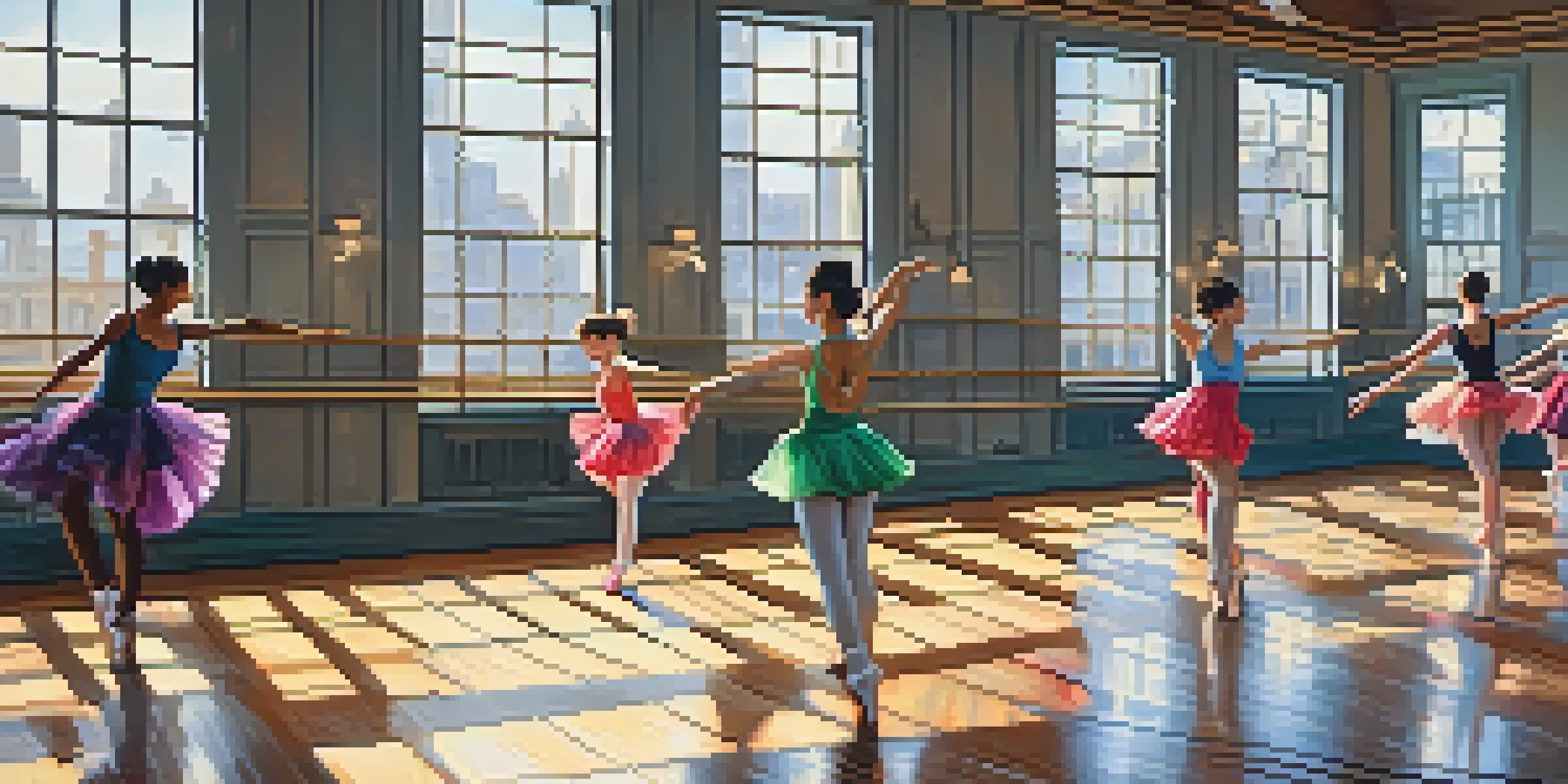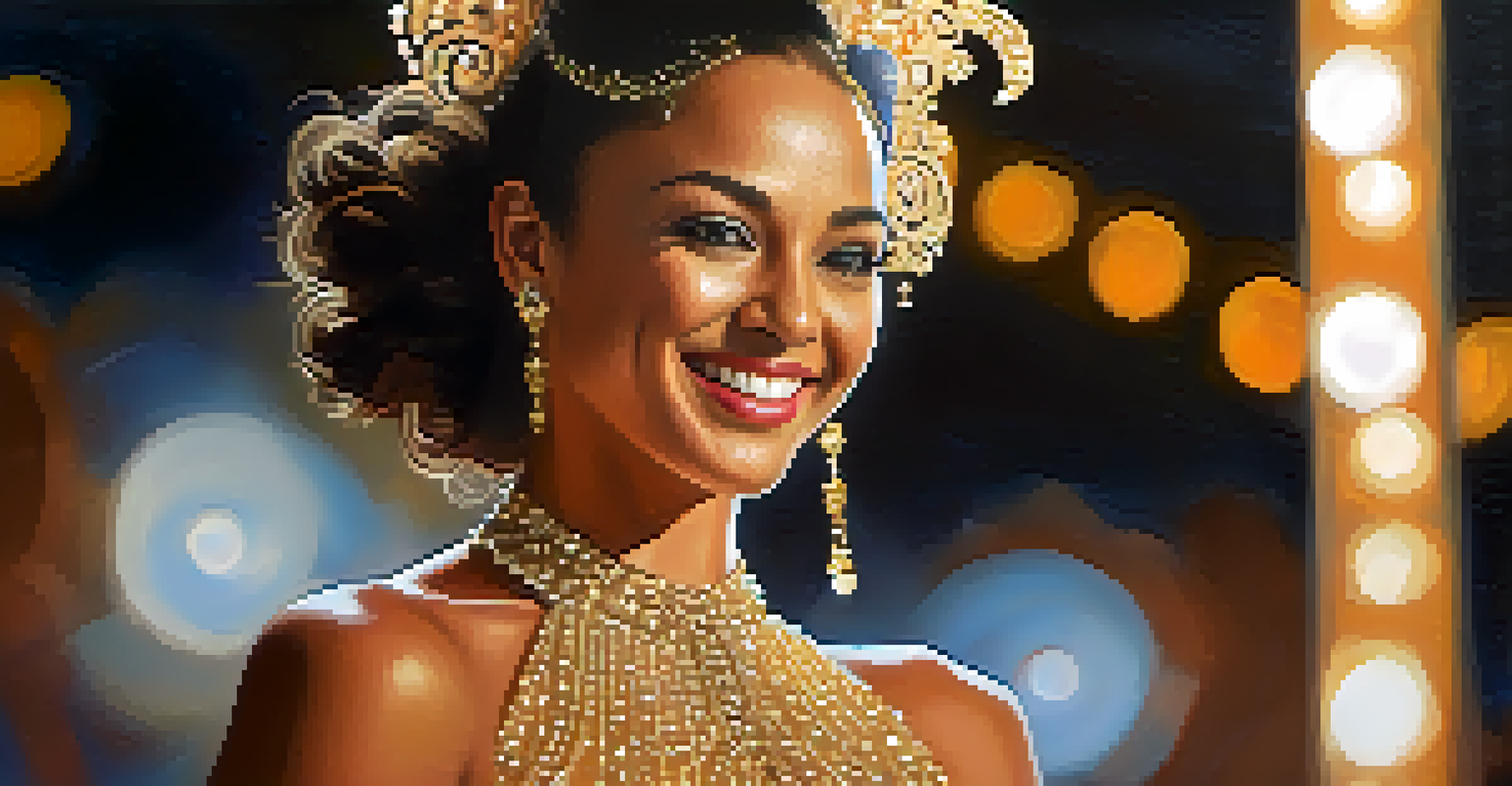Dance Education: Empowering Women in Low-Income Communities

The Transformative Power of Dance Education
Dance education serves as a powerful tool for self-expression and empowerment. For many women in low-income communities, it provides a creative outlet that fosters confidence and resilience. Through dance, individuals can explore their identities and express emotions that may be difficult to verbalize.
Dance is the hidden language of the soul.
Moreover, dance education encourages physical health, promoting fitness and well-being. This physical aspect is essential, as many women from these communities may not have access to traditional health resources. By incorporating movement into their lives, they can improve both their physical and mental health.
Finally, dance creates a sense of belonging and community. Participating in group classes or performances allows women to connect with others who share similar experiences and challenges. This community support can be invaluable in overcoming personal and societal obstacles.
Building Confidence Through Dance
One of the most significant benefits of dance education is its ability to build self-confidence. Learning new dance techniques and performing in front of an audience can be intimidating, but it also encourages personal growth. Women who take on these challenges often find a newfound sense of self-worth.

As they master different styles, from ballet to hip-hop, they develop a belief in their abilities. This confidence can extend beyond the dance floor, impacting their interactions in other areas of life, such as school, work, and relationships. It’s a ripple effect that can change their outlook on what they can achieve.
Dance Empowers Women Creatively
Dance education serves as a vital outlet for self-expression, helping women in low-income communities explore their identities and enhance their confidence.
Additionally, dance education often includes opportunities for leadership, such as teaching younger dancers or choreographing routines. These experiences further enhance their self-esteem and prepare them for future endeavors, both in and out of the dance community.
Creating Opportunities for Economic Mobility
Dance education can also open doors to economic opportunities for women in low-income communities. Many dance programs provide training that can lead to professional careers in dance, teaching, or choreography. This pathway can significantly alter the financial prospects of participants and their families.
The dance is a poem of which each movement is a word.
Moreover, women who engage in dance often gain skills that are transferable to other job markets. Teamwork, discipline, and creativity are qualities highly valued in many professions. Thus, by participating in dance education, these women are not only pursuing a passion but also enhancing their employability.
Additionally, some dance programs partner with local businesses or organizations, offering internships or job placements. These collaborations create pipelines for success, ensuring that the benefits of dance education extend far beyond the studio.
Fostering Personal Expression and Creativity
Dance education provides a unique platform for personal expression and creativity. For women in low-income communities, this is especially important as it allows them to share their stories and experiences through movement. This form of expression can be both therapeutic and liberating.
Through various dance styles, women can explore different cultural narratives and express their identities. This exploration can foster a sense of pride and connection to their heritage, further enriching their personal narratives. It’s a celebration of who they are and where they come from.
Building Community Through Dance
Participating in dance fosters strong connections among women, creating supportive networks that combat isolation and inspire personal growth.
Furthermore, creative expression through dance can help women process their emotions and experiences. Many find that dancing allows them to cope with challenges such as trauma or societal pressures, providing an essential outlet for reflection and healing.
Strengthening Community Bonds
Dance education also plays a vital role in strengthening community bonds. Many programs bring together women of different backgrounds and ages, fostering a sense of unity and shared purpose. This communal aspect can help combat feelings of isolation that often accompany low-income living.
As participants collaborate on performances or community events, they build lasting friendships and networks. These connections can provide support systems that are crucial for navigating life’s challenges. The community created through dance often extends beyond the studio, impacting participants’ families and neighborhoods.
Moreover, as these women become role models within their communities, they inspire others to pursue their passions. This ripple effect can lead to a more vibrant, connected community where individuals uplift one another and collectively strive for improvement.
Encouraging Leadership and Mentorship
Dance education often encourages leadership and mentorship among participants. As women progress in their dance journey, many find themselves in positions to mentor younger dancers or lead classes. This not only enhances their skills but also fosters a sense of responsibility and pride.
Mentorship can significantly impact both the mentor and the mentee. The mentor develops leadership skills and gains confidence, while the mentee benefits from guidance and support. This relationship can create a powerful cycle of empowerment within the community.
Dance Enhances Mental Well-Being
Engaging in dance activities not only provides an emotional release but also promotes improved mental health through social interaction and mindfulness practices.
Furthermore, women who take on leadership roles in dance often carry these skills into other areas of their lives. Whether in their careers or community involvement, they become advocates for change, inspiring others to follow their lead.
The Influence of Dance on Mental Health
Dance education has a profound impact on mental health, particularly for women in low-income communities. Engaging in dance can reduce symptoms of anxiety and depression, providing an emotional release that many desperately need. The act of moving to music can be a joyful escape from everyday stressors.
Moreover, the social aspect of dance education contributes to improved mental well-being. Building friendships and being part of a supportive group can alleviate feelings of loneliness and isolation. Together, these factors contribute to a healthier, happier mindset.

Additionally, many dance programs incorporate mindfulness practices, such as breathing exercises and reflection. These practices can enhance self-awareness and emotional regulation, equipping women with tools to manage their mental health more effectively in everyday life.